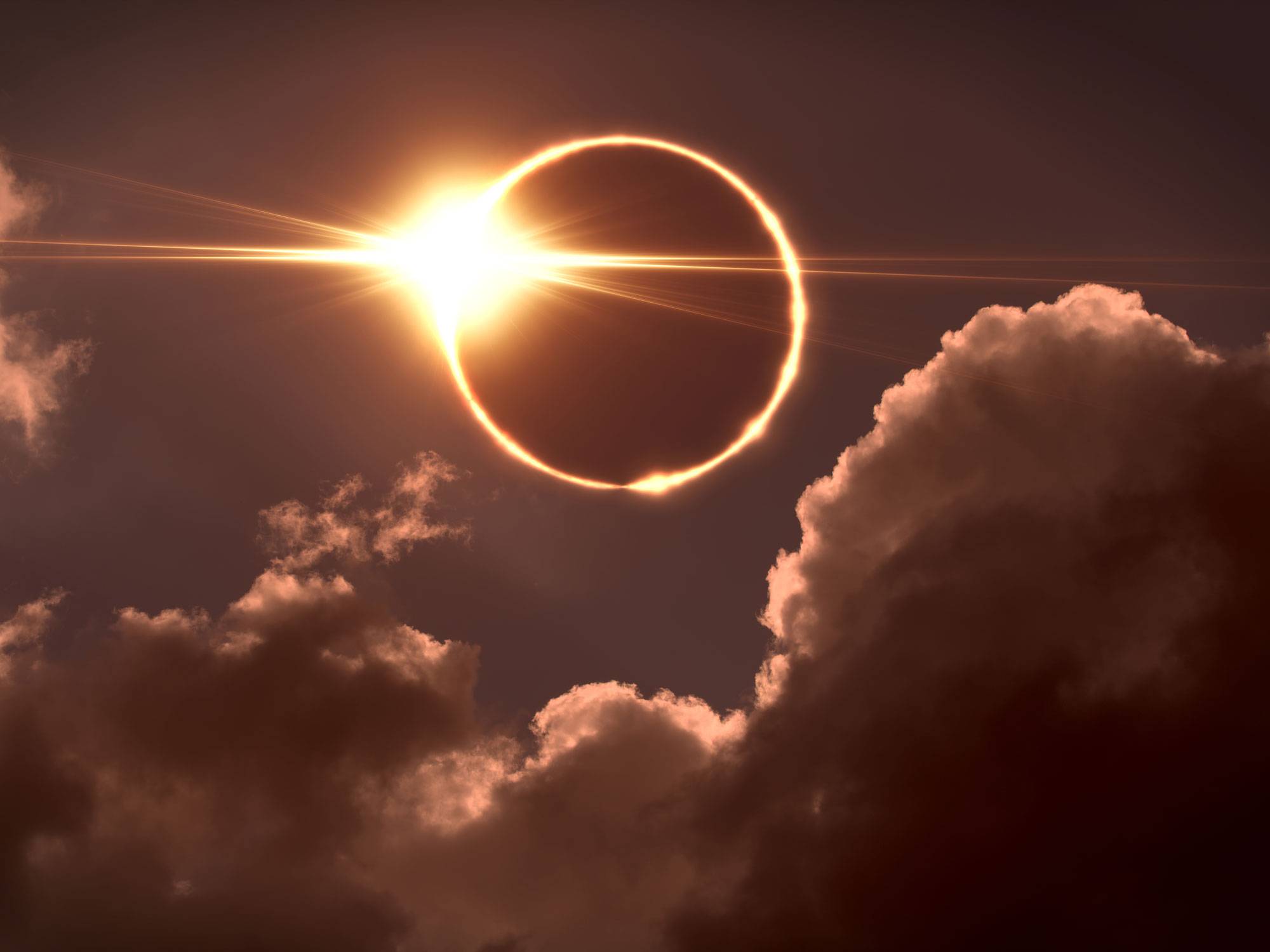“Unless you have been living under a rock on another planet, you have to be aware of what is going to be happening in just a few weeks,” Professor Emeritus of Astronomy, Anthropology, and Native American Studies Anthony Aveni told an audience in the Ho Tung Visualization Lab last week.
A total solar eclipse will cross North America on Monday, April 8. That day, buses will ferry more than 200 Colgate University students, faculty, and staff to Hobart and William Smith Colleges, where they will join ranks with students and astronomers to observe the celestial event, which will not take place again in the region until 2079.
“We partnered with Hobart William Smith to find the perfect location within the path of totality,” explained Joe Eakin, technical director and designer at the Vis Lab, who will be leading the expedition. “You have to be in the totality path to truly experience the magic of a total solar eclipse.”
In this path, the eclipse will reach Hobart William Smith’s campus in Geneva, N.Y., between approximately 2:07 p.m. and 4:34 p.m., achieving totality for 2 minutes and 21 seconds at 3:21 p.m. The sky will darken almost completely, and the sun’s corona as well as the mountains of the moon will be clearly visible.
In anticipation of the pilgrimage, Aveni briefed community members on the physics and folklore of the phenomenon, which he has viewed in totality numerous times, usually from ships on the ocean. “Sublime. That’s the word that is often used to describe an eclipse,” said Aveni.
According to the professor, an eclipse sparks a variety of natural phenomena as well as awe. During totality, birds fall silent, nocturnal animals emerge from hiding, winds can pick up, and temperatures plummet. Faces of friends can look grotesque in the odd shadows. Perhaps strangest of all, wavy dark and light lines or “shadow bands” are seen on surfaces immediately before and after the eclipse.
“Weird things happen during totality,” Eakin confirmed. “And best of all, they’re going to happen right next door.”
Colgate is hosting a wide range of activities in the weeks leading up to the eclipse including planetarium shows and an exhibition from Albright College artist Kristen Woodward inspired by the eclipse. Visit colgate.edu/calendar for dates and details.
